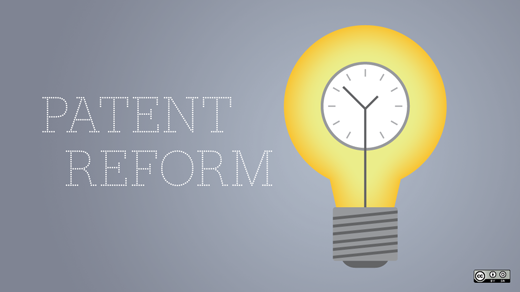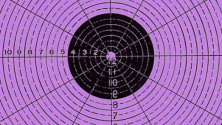Congress has been considering some form of patent reform for several years now, beginning with the Patent Reform Act of 2005. Once again, patent reform in is the air, as the Patent Reform Act of 2011 (the "PRA") has been approved by the Senate Judiciary Committee and is scheduled to be debated by the full Senate this week. Although full reform of the U.S. patent system is needed for many reasons, the PRA has been watered down to a point that minimizes its usefulness. A thorough discussion of the need for patent reform is left for another day. This article provides a short overview of main provisions of the PRA and concludes by noting some potentially useful provisions in earlier versions of the bill that have been left out of the PRA.
First To File System
The PRA would move the U.S. from a "first to invent" patent system to a "first to file" system. In a first to file system, the right to the grant of a patent for a given invention lies with the first inventor to file a patent application for protection of that invention, regardless of the date of actual invention. Currently, unlike virtually all of the rest of the world, the U.S. has a "first to invent" system. The focus of such a system is on the date of invention – a date that is often not clear and can be fabricated (or at least hidden) during prosecution and, later, during litigation. Right now, patent applicants, when faced with an invention created earlier than their patent application was filed, can simply swear to the patent office that they came up with their idea first. This is referred to as "swearing behind" prior art. Preventing such tactics, and letting the patent filing date control, would create more certainty in the system.
Right now, one problem for innovators is that they cannot fully know whether their idea is subject to patent claims because the priority date for a patentee can begin well before a patent is actually filed. Using the publicly-available filing date rather than a secret date that can be fabricated after the fact would provide the public fair notice and help prevent patent protection from "appearing from nowhere." In addition, using such an objective measure would eliminate extraneous costs related to determining the conception date.
Venue
The PRA would require transfer upon a showing that the transferee venue is "clearly more convenient than the venue in which the civil action is pending." This is, in effect, merely a codification of the current law.
Damages
The PRA states that "the court shall identify the methodologies and factors that are relevant to the determination of damages, and the court or jury shall consider only those methodologies and factors relevant to making such determination." This would provide wide discretion to the trial judge without any real enforcement mechanism. Therefore, in practice, this provision would not change the current law much, if at all. In addition, the damages provision would allow any party to have infringement and validity issues tried before damages and willful infringement. This would be mandatory absent good cause, which would be a change in the law. This change would make the jury's decision easier by presenting the evidence in a manner that is easier for the jurors to understand, and by limiting the number of legal issues the jury must address at any particular time. Bifurcation of trial would also save time since a jury deciding against liability would not need to decide damages or willfulness.
Willfulness
The PRA would preclude use of evidence that an alleged infringer failed to obtain the advice of counsel to prove willful infringement or induced infringement.
Third Party Challenges
The PRA includes three ways that a third party may challenge a patent through the patent office. First, Act would permit third parties to submit prior art patents or publications, as well as statements by the patent applicant to the patent examiner during pendency of a patent application. Second, a post-grant review proceeding would be available to any party. Although virtually any legal challenge could be asserted, the request would have to be initiated within nine months of the patent issuing. Third, once the nine month period for post grant review expires, the PRA would allow any party to file for "inter partes review." However, any challenge would be limited to consideration of patents and printed publications.
Other Provisions
The PRA includes several other provisions, including restricting "false marking" claims to those who have actually been harmed, allowing filing of patent applications by assignees, maintaining "best mode" requirement but eliminate failure to meet it as a basis for invalidating a patent, disallowing patents claiming tax strategies, authorizing the director of the patent office to set fees, and eliminating the requirement that Federal Circuit judges must reside within 50 miles of the District of Columbia.
Prior Versions of the PRA
Many provisions of the current version of the PRA have been watered down significantly from earlier proposals. For instance, the 2007 Act restricted damages only to "that economic value properly attributable to the patent’s specific contribution over the prior art." That is, the value of the actual invention would have been the focus, not the value of a larger product or system in which the invention is used. This same prior version of the Act also required that in order for a defendant to be found to willfully infringe (which may entail treble damages) a patent owner needed to show by clear and convincing evidence that the defendant, after receiving written notice from the patentee, performed one or more of the alleged acts of infringement. It would have also barred a willfulness finding if the defendant reasonably relied on the advice of counsel.
Perhaps most important, the 2007 Act would have prevented defendants from being dragged into court in states in which they are not located. Instead, plaintiffs would only have been able to sue where the "defendant committed a substantial portion of the infringing acts and has an established physical facility that defendant controls and that constitutes a substantial portion of the defendant’s operations". Thus, under the earlier proposal, patent cases could not be brought in locations with little or no relation to the business of the defendant. This would have ended the Eastern District of Texas as a top patent venue for plaintiffs.
Conclusion
Although much has been made of the current PRA, the provisions do little to curb the problems affecting the U.S. patent system. Former versions of the bill contained provisions that would have been useful, but those have been removed.







5 Comments